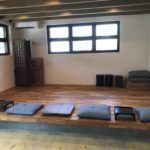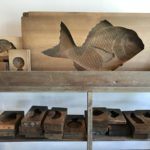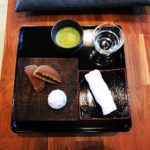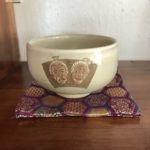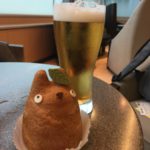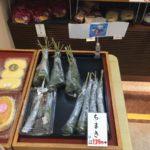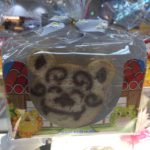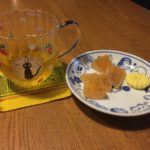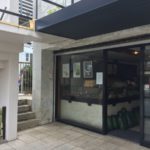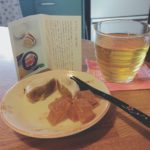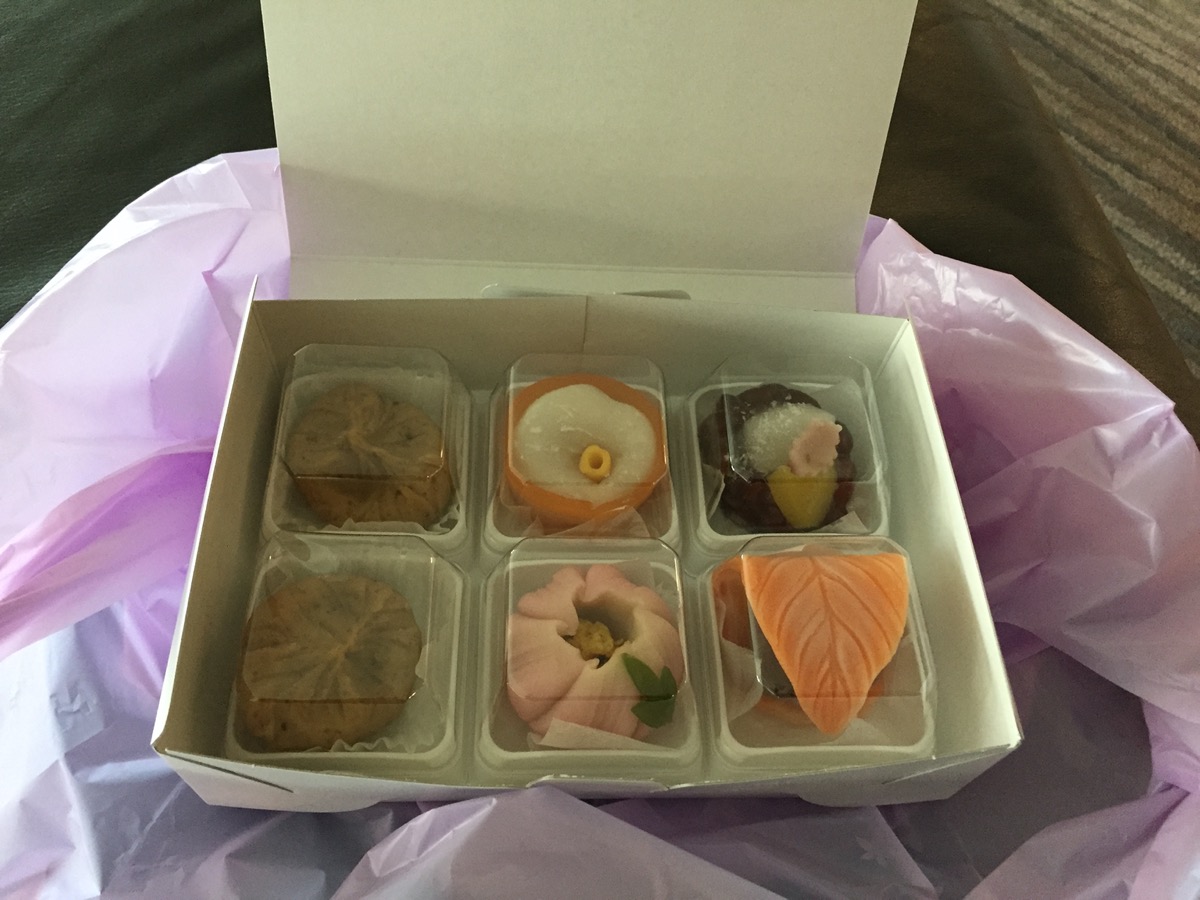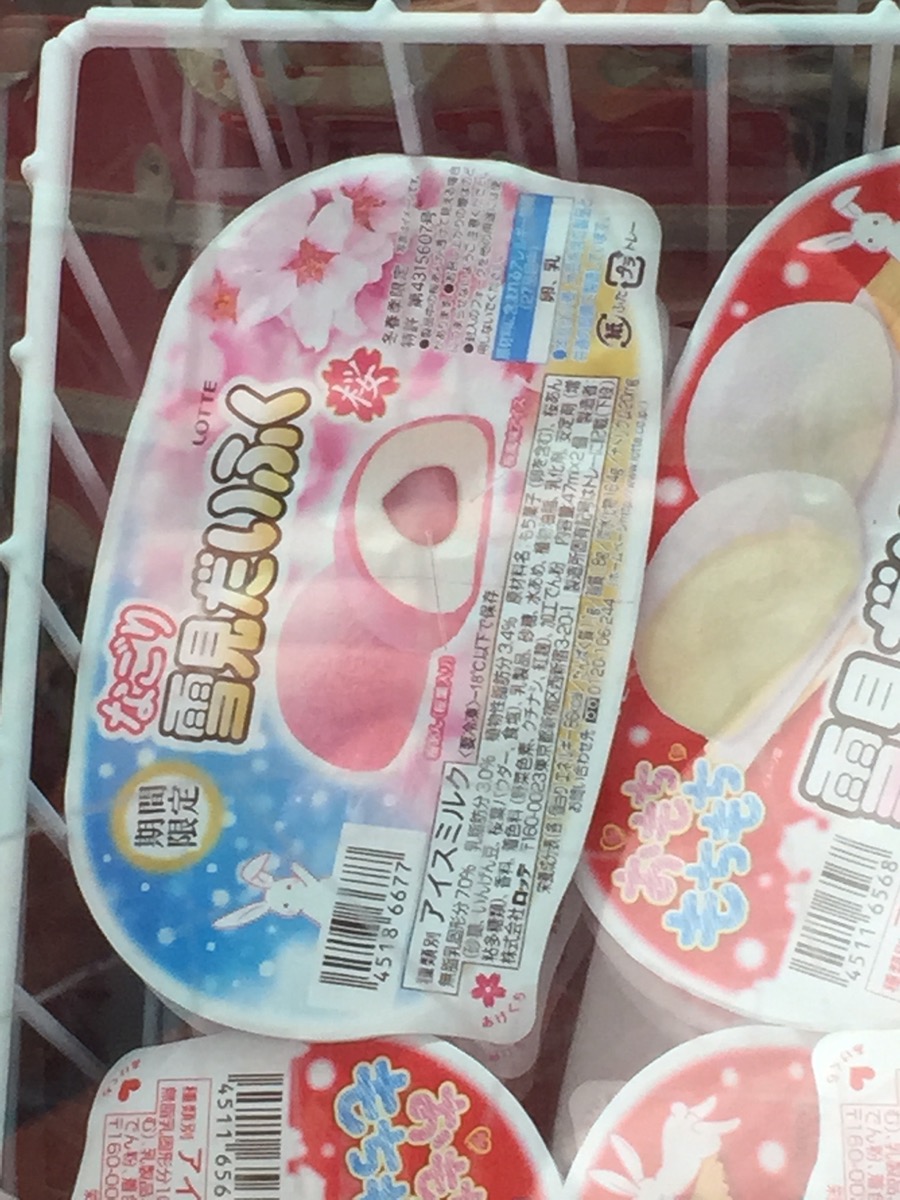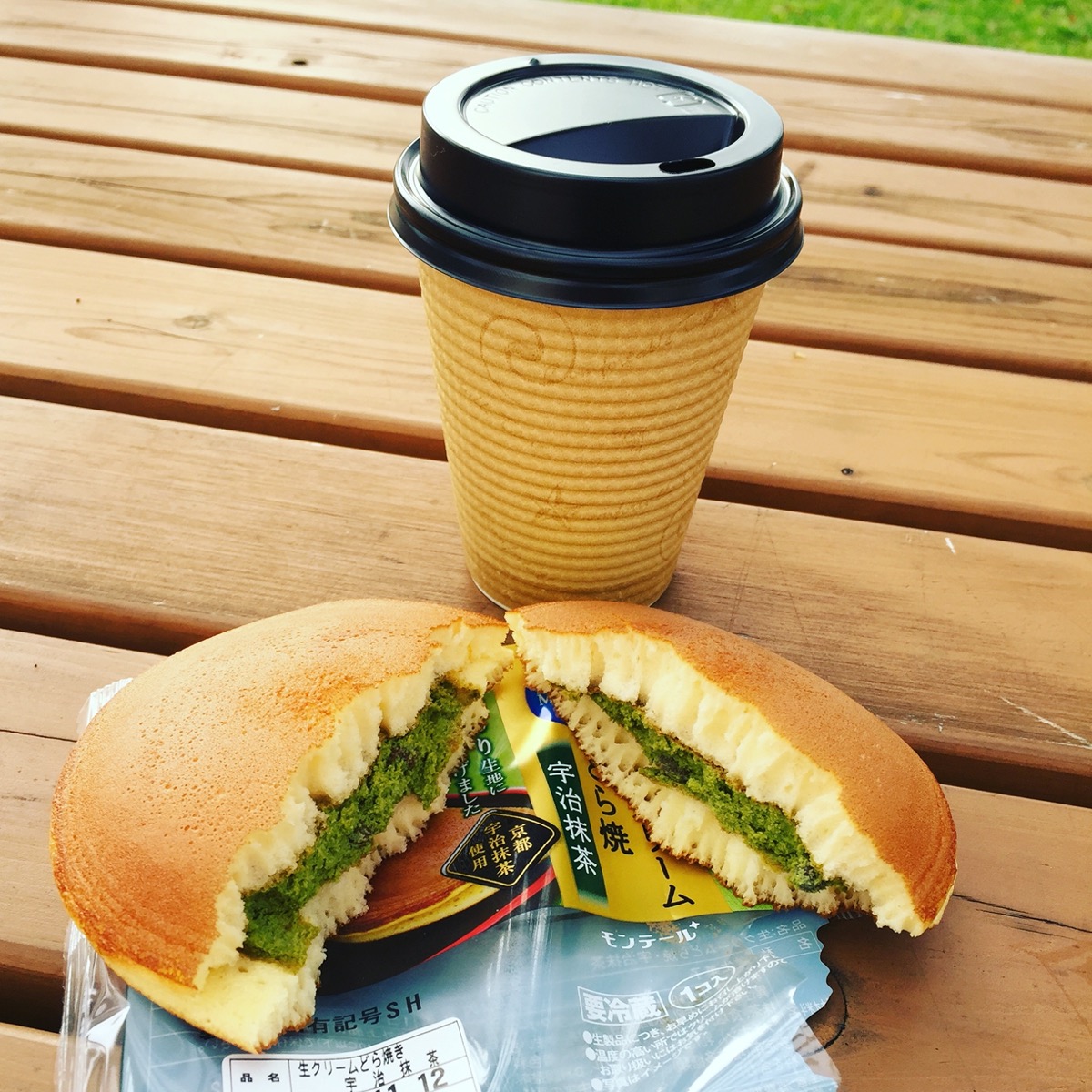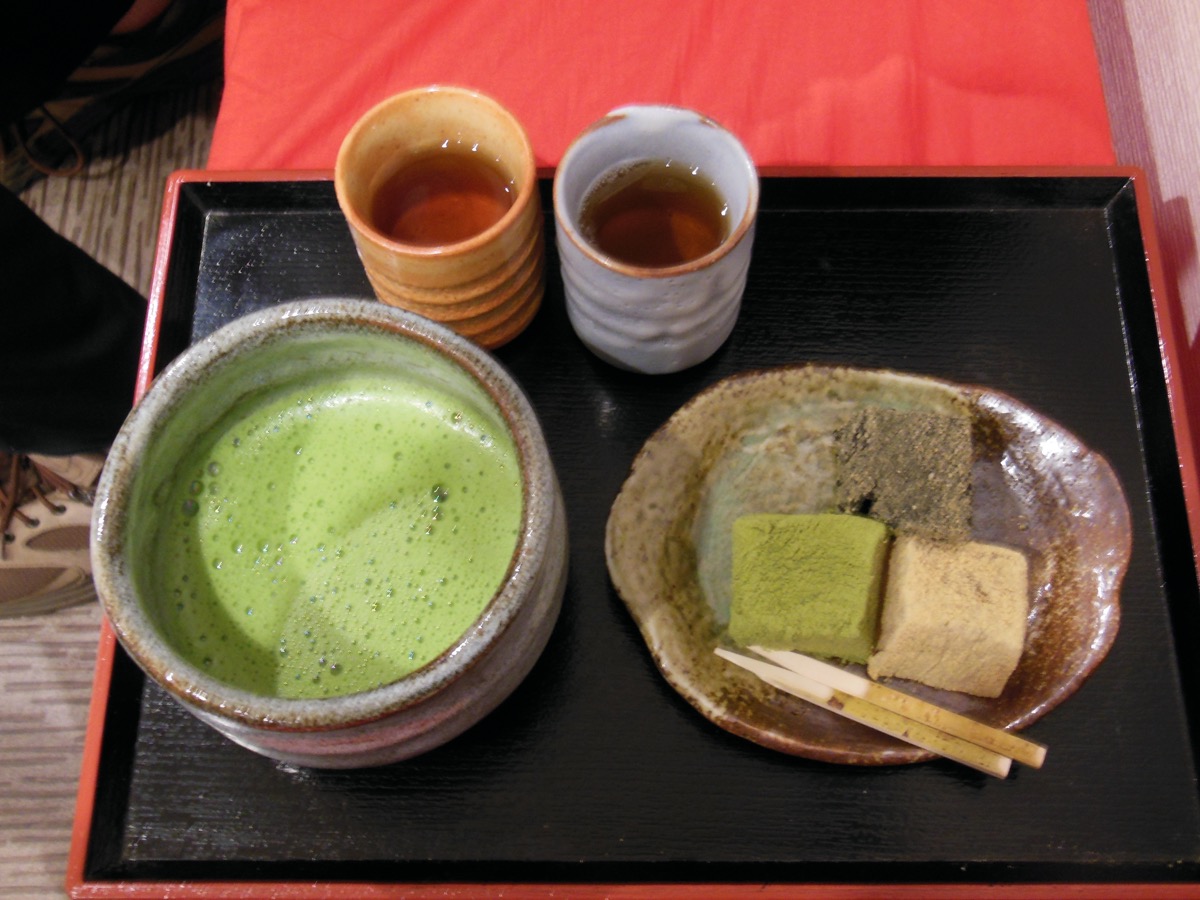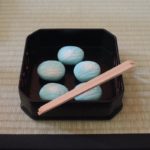三鷹の森ジブリ美術館: “Mitaka no mori Jiburi Bijustsukan” is the name of the Ghibli museum, located in Inokashira Park 井の頭公園 in Kichijoji 吉祥寺. We took an overnight trip to Tokyo, staying by Kichijoji station in order to visit the Ghibli museum (and to eat some totoro themed cream puffs!).
On the day they released tickets (10 am on the 10th of the month before you want to visit), despite the webpage crashing due to high traffic I was (barely) able to secure tickets online using the Lawson’s ticket site. Tickets are only 1000yen per person, and I was not about to try to go through some 3rd party “tour” that included a high transportation fee. Of course, the weekend tickets all sold-out in seconds, so by the time my browser got through, I was at least able to secure last entry (4pm) Friday tickets.
In May, it was the last opportunity to try out the adult-sized cat-bus, so of course I had to fulfill my life dream. This past Friday, I finally got to go to the Ghibli museum and sit in the cat-bus. And the everything about the experience was amazing!
We flew into Haneda airport in Tokyo on Friday early afternoon, arriving about 1pm. From there we jumped onto the trains towards Kichijoji station (2 transfers). The train system in Tokyo can look overwhelming, but with GoogleMaps, it has gotten so easy to navigate. We were at Kichijoji station by about 2pm; since we skipped lunch, we got a snack at the station before heading to the hotel a mere few meters away. We dropped off the suitcase in the room, and headed out to Inokashira park.
At the park entrance, we decided on some crepes from a mama-san crepe stand (husband got savory while I got a sweet blueberry cream cheese), as well as some coffee from the Honolulu Coffee Company (just like home!). We sat by the lake eating and watched the swan boats go by on the pond. After we finished, we strolled through the park, taking the long way to the museum since at this point we had over an hour to kill. The park was really nice, with lots of little surprises everywhere. At about 3:20 we arrived at the museum and there were already a few people milling near the entrance. My husband went up to the ticket taker, and he told us to be lined up at 3:30. Then he laughed when he saw my husband’s uchinaaguchi shirt from Okinawa, apparently he is a fan of Okinawa. So for a few minutes I took some pictures outside the museum, and some people started lining up. At 3:30, they started checking tickets; we received a receipt for 3:40 entrance. So, just as a tip, show up half an hour early to your ticket time and line up! I did not realize this, so I was glad we were so lucky to get in a little earlier than expected, giving us some extra time in the museum.
We entered, received our film ticket and guidance map. There are no pictures inside, only outside. I actually like this policy, otherwise it would be nuts with people taking selfies and insane numbers of photos. I won’t spoil the surprises, but all the exhibits are pretty magical, from the architecture of the house to all the small details, the drawings and sketches, the film pieces, and of course, the life-size cat-bus. It was quite beautiful, and sort of dream-like.
Originally I was unhappy with the 4-6pm entry ticket– I was hoping for an earlier entry. BUT as it turns out, I think it was actually one of the best times to enter! Why? Well, it actually started to be less busy at this time… most people with earlier entrances were finished already and were either waiting for food in the cafe or went home, so when we walked around the museum, it did not feel all that crowded. Plus, the weather was nice, so mid-way through our wanderings we ended up drinking a Ghibli exclusive beer on the patio under the trees (though be warned it is not cheap at 650yen).
Most (English-speaking) people in the online reviews said to skip the short movie showing in the Saturn Theater of the museum… I am glad we did not listen to this, because the movie showing on our trip was “Mei and the Kitten-bus” (めいとこねこバス Mei to koneko-basu). It was so cute! I feel like even with limited Japanese skills, the words were not difficult at all, and the story was easy to follow. 100% recommend. I kind of wish I bought the book in the gift shop, actually– Totoro is one of my favorites.
The last thing we did, was of course, visit the gift shop. By this point, the line was a bit long since the museum was closing at 6pm, though they had several cashiers working to make it go smoothly. We each got a museum folder, I also got a fluffy museum tenugui (Japanese towel) and a mini plushie cat-bus.
We finally had to say goodbye to the museum, leaving at about 5:50. We went through everything the museum had to offer, and obviously could have used a little more time but it ended up to be a fabulous time.
After the wandering back through the park towards the station, we looked through some of the little shops. We stopped at an Okinawan restaurant that had a lot of craft beers on tap (we did not order food there…). Afterwards I took my husband to a rather popular chain ramen joint called Mouko Tanmen Nakamoto 蒙古タンメン中本 since he had been putting up with my Ghibli and crepes. It was your typical set up, narrow restaurant with only counter seats, with a ticket machine at the entrance and a line of locals waiting to catch a seat. The menu was only in Japanese, but it is not difficult, just look for the amount of spicy you want. We were the only foreigners in there that evening (though it looked like at least one other tourist, the rest were mostly office workers). Luckily they slung ramen pretty fast, and the wait was not all that long. While we waited, we noticed people SWEATING, some even crying a little, and one poor girl had an enormous pile of tissues in front of her! This shop is known for spicy ramen. My husband got the #8 spicy ramen (the levels go to 11), and he said that was plenty spicy for him. We noticed several people bought the side of mapo tofu and added it into the ramen! I hadn’t realized this was the popular item (topping??) or I would have told my husband to buy it for himself. They had bibs for protecting your clothes, and since they were many office workers still in suits most people used one.
After finishing ramen, it was time to head back to the hotel and relax. The next morning we walked around Kichijoji and did some shopping. I also ended up trying 2 different taiyaki in the morning. Amane Taiyaki 天音たい焼き was amazing! I usually feel that most taiyaki sellers are the same, but this one was a step above probably any other I have ever had! We also ended up getting a coconut milk boba tea at the Moomin stand. Too cute!
And for one of the highlights of our trip: Totoro cream puff! On the way to Haneda airport, we stopped at Setagaya-Daita station and walked a very short distance to Shirohige Choux Cream Factory 白髭のシュークリーム工房 (the Tolo-pan Coffee and Bakery cafe is on the 2nd floor). They have some seasonal flavors, as well as custard and chocolate year-round. You can get these adorable cream puffs to go, or eat at the cafe upstairs. Since we were tight on time, we ended up getting them to go so we could eat them in the airport lounge. We chose matcha cream, chocolate cream, and custard! Not only were they super cute but also delicious.
imgur album:
https://imgur.com/a/bcpBJ
Ghibli Museum 三鷹の森ジブリ美術館: https://goo.gl/maps/5uFqZP8DSfx
Craft Beer & Okinawan food CRAFT BEER Market クラフトビアマーケット: https://goo.gl/maps/kaXMfEmY9792
Mouko Tanmen Nakamoto 蒙古タンメン中本 (Ramen): https://goo.gl/maps/fLe2S2HNTA42
Amane Taiyaki 天音たい焼き: https://goo.gl/maps/xnXz46UhQf52
Shirohige Choux Cream Factory 白髭のシュークリーム工房: https://goo.gl/maps/knfCCXi6QMP2



